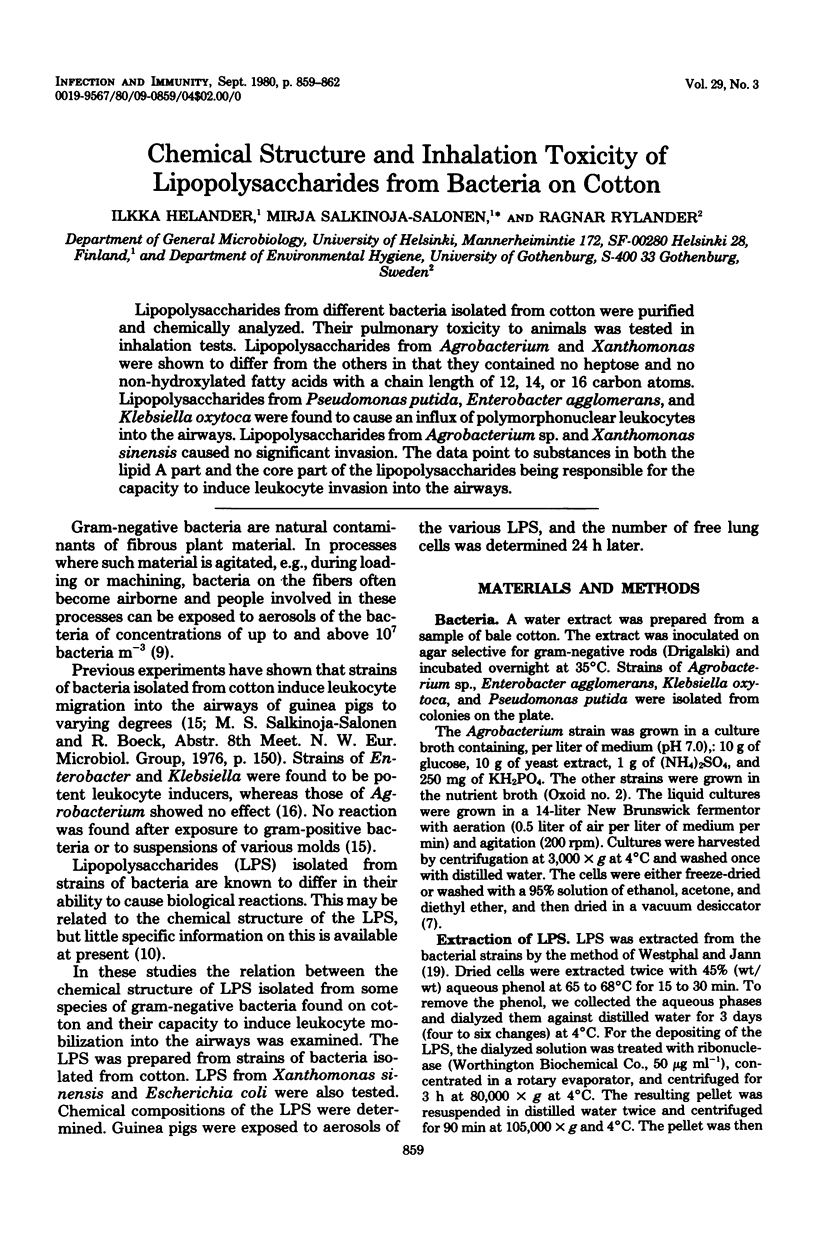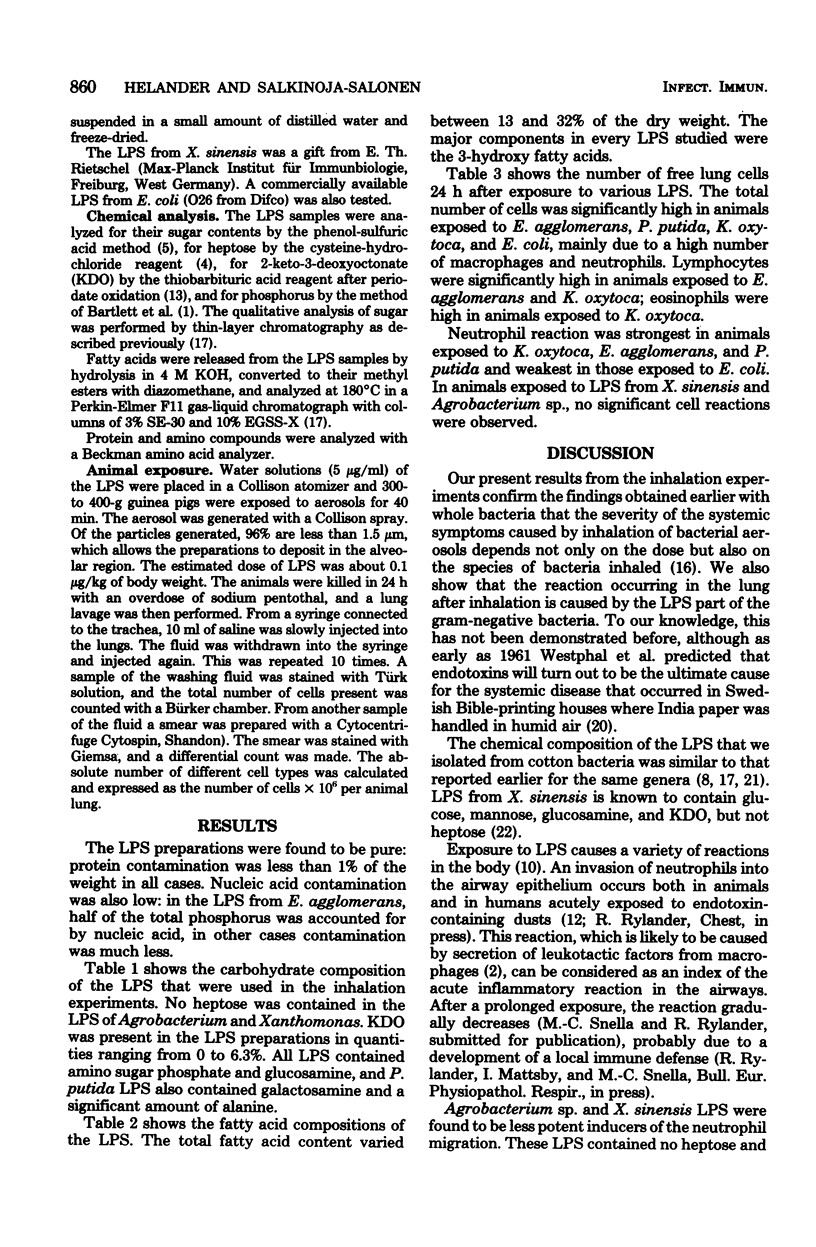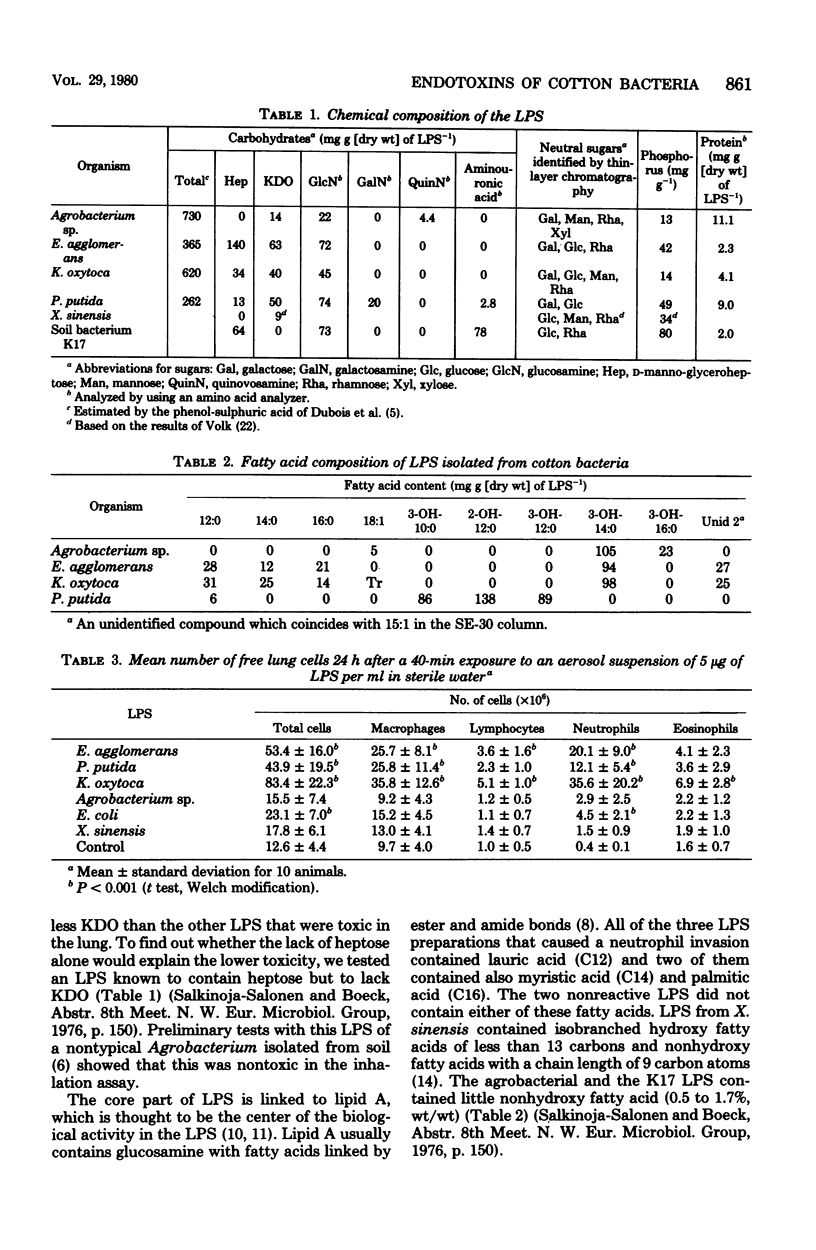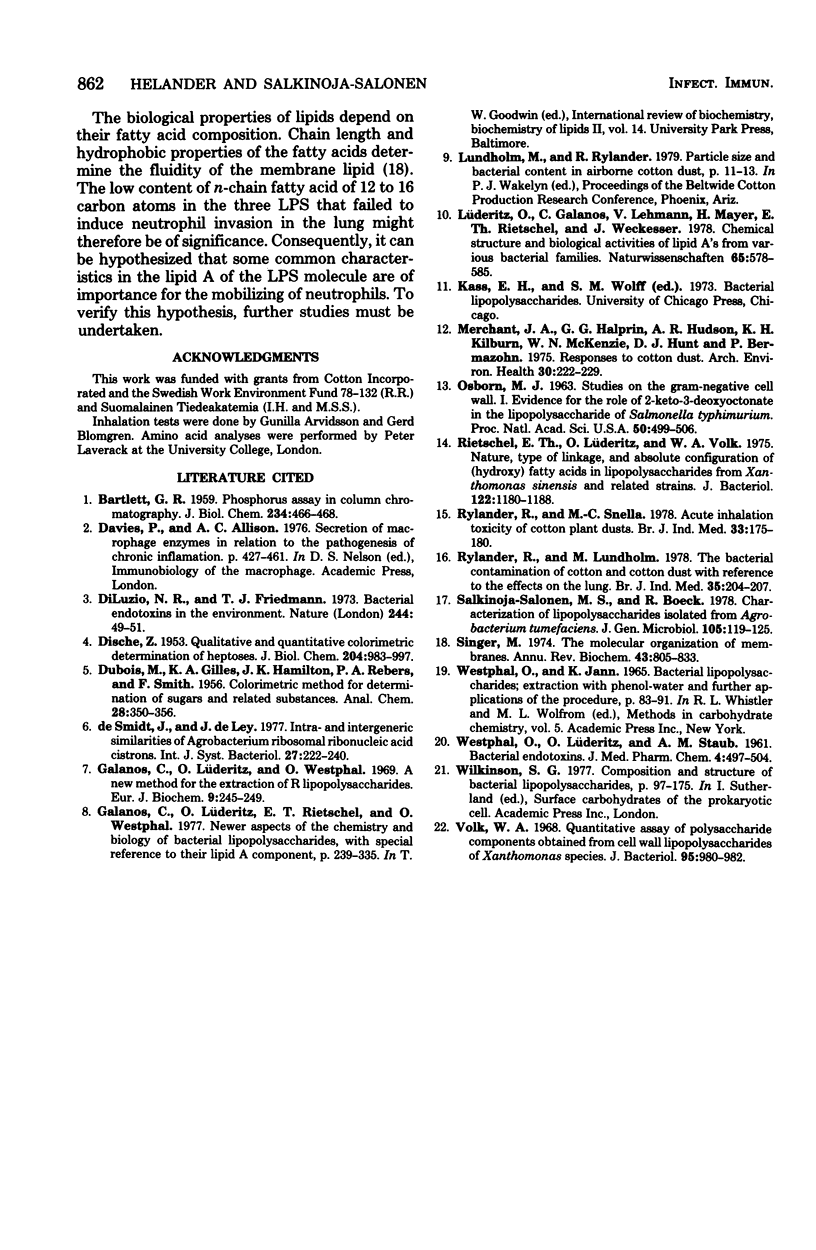Abstract
Lipopolysaccharides from different bacteria isolated from cotton were purified and chemically analyzed. Their pulmonary toxicity to animals was tested in inhalation tests. Lipopolysaccharides from Agrobacterium and Xanthomonas were shown to differ from the others in that they contained no heptose and no non-hydroxylated fatty acids with a chain length of 12, 14, or 16 carbon atoms. Lipopolysaccharides from Pseudomonas putida, Enterobacter agglomerans, and Klebsiella oxytoca were found to cause an influx of polymorphonuclear leukocytes into the airways. Lipopolysaccharides from Agrobacterium sp. and Xanthomonas sinensis caused no significant invasion. The data point to substances in both the lipid A part and the core part of the lipopolysaccharides being responsible for the capacity to induce leukocyte invasion into the airways.
Full text
PDF



Selected References
These references are in PubMed. This may not be the complete list of references from this article.
- BARTLETT G. R. Phosphorus assay in column chromatography. J Biol Chem. 1959 Mar;234(3):466–468. [PubMed] [Google Scholar]
- DISCHE Z. Qualitative and quantitative colorimetric determination of heptoses. J Biol Chem. 1953 Oct;204(2):983–997. [PubMed] [Google Scholar]
- Di Luzio N. R., Friedmann T. J. Letter: Bacterial endotoxins in the environment. Nature. 1973 Jul 6;244(5410):49–51. doi: 10.1038/244049a0. [DOI] [PubMed] [Google Scholar]
- Galanos C., Lüderitz O., Westphal O. A new method for the extraction of R lipopolysaccharides. Eur J Biochem. 1969 Jun;9(2):245–249. doi: 10.1111/j.1432-1033.1969.tb00601.x. [DOI] [PubMed] [Google Scholar]
- Lüderitz O., Galanos C., Lehmann V., Mayer H., Rietschel E. T., Weckesser J. Chemical structure and biological activities of lipid A's from various bacterial families. Naturwissenschaften. 1978 Nov;65(11):578–585. doi: 10.1007/BF00364907. [DOI] [PubMed] [Google Scholar]
- Merchant J. A., Halprin G. M., Hudson A. R., Kilburn K. H., McKenzie W. N., Hurst D. J., Bermazohn P. Responses to cotton dust. Arch Environ Health. 1975 May;30(5):222–229. doi: 10.1080/00039896.1975.10666685. [DOI] [PubMed] [Google Scholar]
- OSBORN M. J. STUDIES ON THE GRAM-NEGATIVE CELL WALL. I. EVIDENCE FOR THE ROLE OF 2-KETO- 3-DEOXYOCTONATE IN THE LIPOPOLYSACCHARIDE OF SALMONELLA TYPHIMURIUM. Proc Natl Acad Sci U S A. 1963 Sep;50:499–506. doi: 10.1073/pnas.50.3.499. [DOI] [PMC free article] [PubMed] [Google Scholar]
- Rietschel E. T., Lüderitz O., Volk W. A. Nature, type of linkage, and absolute configuration of (hydroxy) fatty acids in lipopolysaccharides from Xanthomonas sinensis and related strains. J Bacteriol. 1975 Jun;122(3):1180–1188. doi: 10.1128/jb.122.3.1180-1188.1975. [DOI] [PMC free article] [PubMed] [Google Scholar]
- Rylander R., Lundholm M. Bacterial contamination of cotton and cotton dust and effects on the lung. Br J Ind Med. 1978 Aug;35(3):204–207. doi: 10.1136/oem.35.3.204. [DOI] [PMC free article] [PubMed] [Google Scholar]
- Rylander R., Snella M. C. Acute inhalation toxicity of cotton plant dusts. Br J Ind Med. 1976 Aug;33(3):175–180. doi: 10.1136/oem.33.3.175. [DOI] [PMC free article] [PubMed] [Google Scholar]
- Singer S. J. The molecular organization of membranes. Annu Rev Biochem. 1974;43(0):805–833. doi: 10.1146/annurev.bi.43.070174.004105. [DOI] [PubMed] [Google Scholar]
- Volk W. A. Quantitative assay of polysaccharide components obtained from cell wall lipopolysaccharides of Xanthomonas species. J Bacteriol. 1968 Mar;95(3):980–982. doi: 10.1128/jb.95.3.980-982.1968. [DOI] [PMC free article] [PubMed] [Google Scholar]
- WESTPHAL O., LUEDERITZ O., STAUB A. M. Bacterial endotoxins. J Med Pharm Chem. 1961 Dec 8;4:497–504. doi: 10.1021/jm50019a008. [DOI] [PubMed] [Google Scholar]


